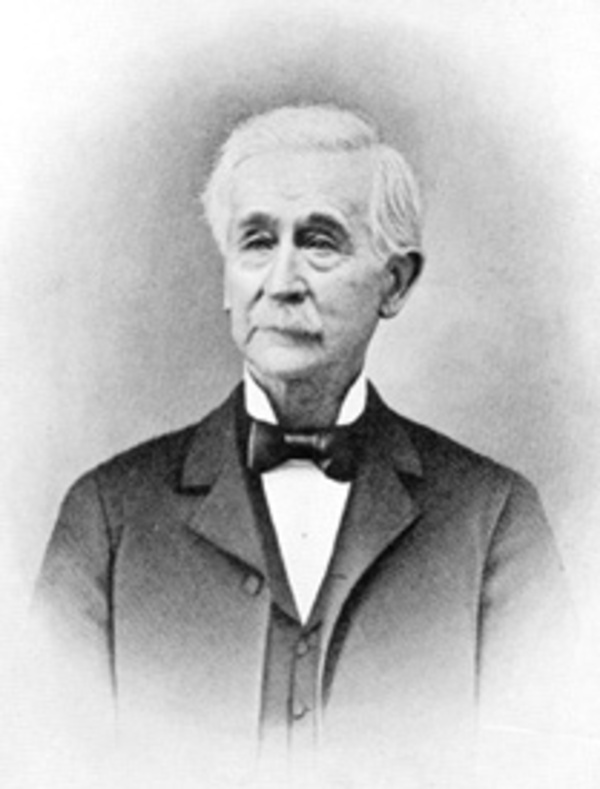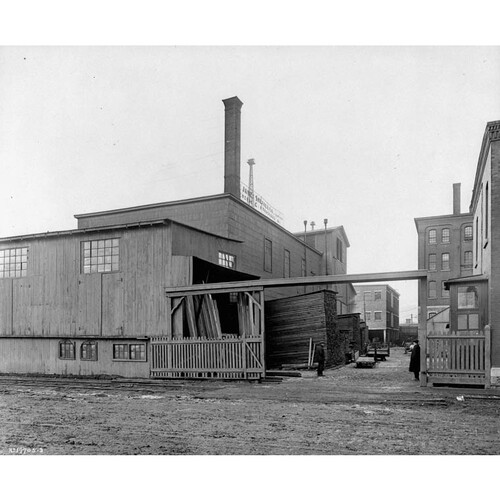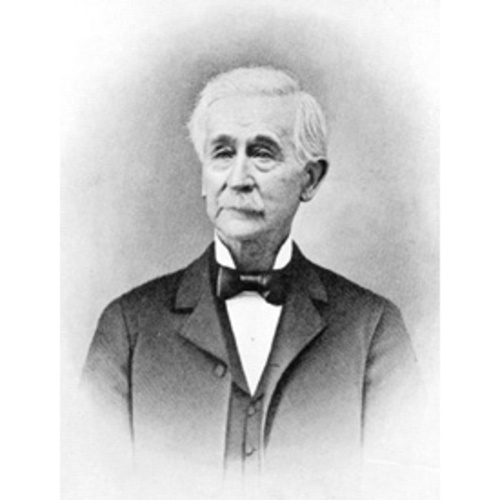
Source: Link
SHEARER, JAMES, carpenter and lumber manufacturer; b. 31 July 1822 in Rosegill, near Dunnett, Scotland, son of Traill Shearer and Christian Simpson; m. 23 June 1848 Eliza Graham of Montreal, and they had five daughters and three sons; d. there 13 Sept. 1906.
James Shearer was born in the northeastern extremity of Scotland. After receiving an elementary school education, he was apprenticed to a local carpenter and millwright, and subsequently worked for a builder in Wick. Following the lead of many Scots of the period who wanted to get ahead in the world, he decided to emigrate. In May 1843 he left for Montreal, where some relatives were already established.
Shearer’s first job in Montreal was working for Edward J. Maxwell, a carpenter, builder, and lumber merchant. After three years with Maxwell, he went to Quebec City to work on the bomb-proof hospital of the Citadel. He returned to Montreal in 1850 and became involved in producing woodwork for cabins and interiors of many steamboats being constructed in Montreal by builders such as Augustin Cantin*. This work led him to lease a lot with water-power at the St Gabriel lock on the Lachine Canal in 1853. There, he set up a sash, moulding, and door manufactory. Although the use of power-driven woodworking machinery had begun in the early part of the 19th century, it was not adopted on a large scale until the 1850s and Shearer was a pioneer in the field of mass-produced wood products. By 1856 he employed 55 hands and used 32 power-driven woodworking machines.
In the early 1860s Shearer decided to enter the primary wood sector. With Jonathan Brown, a bookkeeper, he formed Shearer and Brown Company, which had a steam-powered sawmill south of the St Gabriel lock. Shearer was thus able to produce for the primary lumber market as well as for the secondary one and these twin activities were the basis of his success. In 1871 the sash and door mill had 80 employees and produced material worth $71,000 while the sawmill and planing mill had 26 men and produced $40,800 worth of lumber. The depression of the 1870s interrupted the pattern of growth but by 1887 the sash and door mill, James Shearer Company, had 125 workers. The following year Shearer brought his two elder sons into the business. Three years before his death, the manufactory and the sawmill were amalgamated under the name of Shearer, Brown, and Wills Limited. After the deaths of the founding partners, the company would be renamed the James Shearer Company Limited in 1912.
Shearer was an innovator. He is said to have developed a hollow roof drainage system to overcome the problems of the Canadian winter. The roof was concave and the drain for the run-off was in the centre of the roof; it carried the water down the inside of the building where it was protected from freezing. This type of roof was apparently first used on the Windsor Hotel in Montreal in 1877. Shearer was also responsible for the “Shearer scheme” to redevelop Montreal Harbour. In 1882 he put forward an extensive plan, consisting of a large dam, with a combined railway and roadway on top, from the foot of Victoria Bridge to Île Sainte-Hélène and a suspension bridge from there to the south shore of the St Lawrence River. Since the development would require major changes to the facilities of the Grand Trunk Railway, the Montreal Harbour Commission, and various shipping interests, there was substantial opposition to the scheme. As a result, a bill to incorporate the St Lawrence Bridge and Manufacturing Company, which was to implement the plan, failed to get approval from the House of Commons committee on railways and telegraphs in March 1883.
Shearer was a trained craftsman who turned his skills to good use in Canada. He built a successful enterprise on the twin activities of sawmilling and producing interior woodwork. He also demonstrated his talents for innovation by pioneering in the mass production of woodwork, by developing a novel roof drainage system, and by attempting to improve Montreal’s harbour.
ANQ-M, CE1-115, 15 sept. 1906; CE1-121, 23 juin 1848. NA, MG 28, III 102; RG 31, C1, 1871, Montreal, Sainte-Anne ward. Montreal Daily Star, 14 Sept. 1906. F. F. Bateman, Reply to the Montreal Harbour engineer’s report on the St. Lawrence Bridge and Manufacturing scheme ([Montreal?, 1882?]); St. Lawrence Bridge and Manufacturing scheme: engineer’s report, 18th January, 1882 (Montreal, 1882). Borthwick, Hist. and biog. gazetteer. Can., Prov. of, Legislative Assembly, App. to the journals, 1856, app.31. Canadian annual rev. (Hopkins), 1906. Cyclopædia of Canadian biog. (Rose and Charlesworth). Directory, Montreal, 1850–90. An encyclopaedia of Canadian biography, containing brief sketches and steel engravings of Canada’s prominent men (3v., Montreal and Toronto, 1904–7). John Kennedy, Report on the St. Lawrence Bridge & Manufacturing scheme (Montreal, 1882). Montreal in 1856: a sketch prepared for the celebration of the opening of the Grand Trunk Railway of Canada (Montreal, 1856).
Cite This Article
Larry S. McNally, “SHEARER, JAMES,” in Dictionary of Canadian Biography, vol. 13, University of Toronto/Université Laval, 2003–, accessed April 4, 2025, https://www.biographi.ca/en/bio/shearer_james_13E.html.
The citation above shows the format for footnotes and endnotes according to the Chicago manual of style (16th edition). Information to be used in other citation formats:
| Permalink: | https://www.biographi.ca/en/bio/shearer_james_13E.html |
| Author of Article: | Larry S. McNally |
| Title of Article: | SHEARER, JAMES |
| Publication Name: | Dictionary of Canadian Biography, vol. 13 |
| Publisher: | University of Toronto/Université Laval |
| Year of revision: | 1994 |
| Access Date: | April 4, 2025 |




